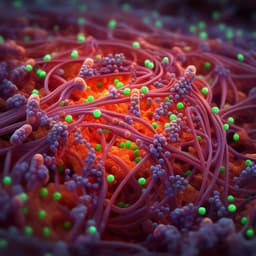
Space Sciences
Detailed study of a rare hyperluminous rotating disk in an Einstein ring 10 billion years ago
D. Liu, N. M. F. Schreiber, et al.
Discover the fascinating world of hyperluminous infrared galaxies (HyLIRGs) with this groundbreaking study on PJ0116-24, the brightest lensed HyLIRG Einstein ring in the southern sky. Conducted by a renowned team of authors, this research reveals that massive starburst disks can achieve maximal star formation rates during their secular evolution, challenging traditional views on galaxy mergers.
Playback language: English
Related Publications
Explore these studies to deepen your understanding of the subject.







